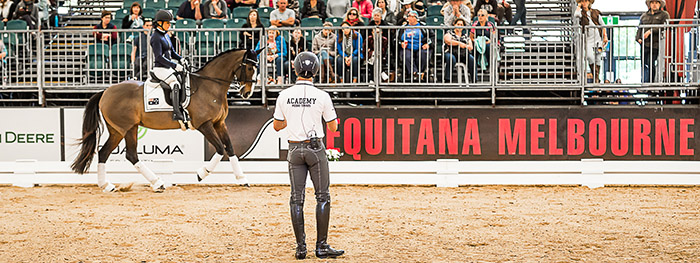
I’m going to the Pedro Torres Masterclass at Equitana with all the warning bells ringing loud and clear in my ear. When I first met Pedro a decade ago, he was World Champion of Working Equitation, an honest Portuguese cowboy, but by 2018 he seems to have morphed into one of those too sensitive to compete, forget the principles, I’ll do it my way, gurus that clutter the equestrian world to the great delight of the simple minded. The warning words were all there natural, vibrations, and feel, feel, feel.
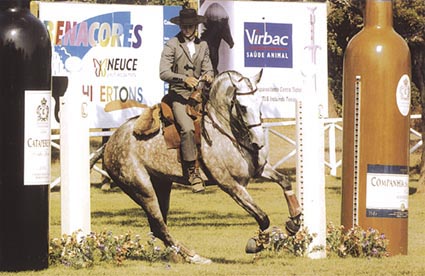
The day before the class, I’d sat down to interview Pedro, and lead with the obvious question – how is it that a world champion in Working Equitation, is taking a Dressage Masterclass?
“I think it is behind the Working Equitation, to be a World Champion, there has to exist a really nice base – it’s not in Dressage but it’s in Equitation, I think it is the way you ride. You can call it Dressage, but the base is almost the same for every discipline, then you have to be specific, but the base is the same.”
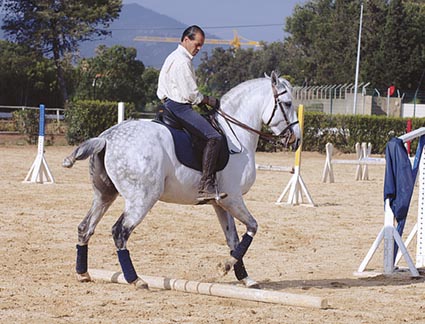
What is the base?
“I think you have to have the base for the horse and for the rider. The base for the horse, I think it is very important you find the natural balance, and then comes communication and the communication is with signals, how you touch with your legs, how you hold with the reins, how you feel – this is how you start the communication with the horse. The main thing is how you understand your horse. This is what I am going to try and explain in the Masterclass. My view, my feeling, about the horses I am going to present there. I don’t know much about these horses, just twenty minutes with them today…”
The first horse, Justine Greer’s four-year-old, current National Novice Champion, Yarramee Fonzie, is a good candidate for Pedro’s style: “We have to work with the horse’s energy, it flows through the horse to our hands. Imagine the energy as water through our legs to our hands. The hind legs produce the water across the back. With young horses they go with their necks a little down, we need a little more fluid energy then try and ride them up and keep the energy. There will be problems with the contact when the energy doesn’t flow to the hands.”
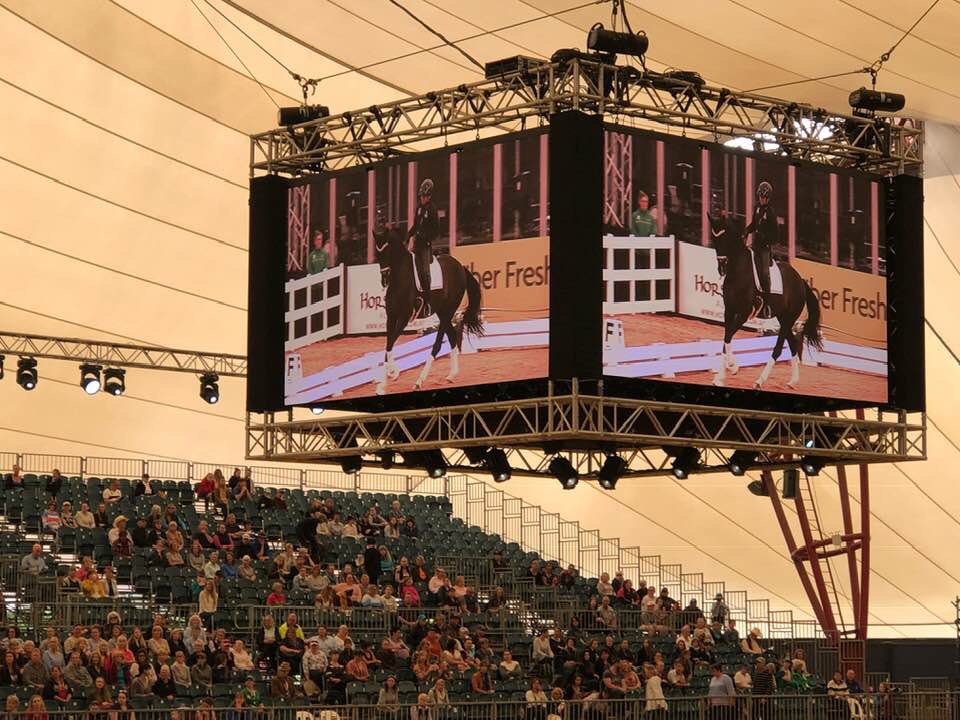
Caught on the big screen, Pedro and Fonzie
Pedro rode the youngster, and showed a bit of gentle leg yielding, and then rode him up a little in the canter: “In the canter you can help him a little then light, light, light. If you feel and enjoy the movement, it can be better, but it is impossible to be bad.”
But it is also possible to be a tad boring…
“My plan in this Masterclass is that I want to do something different, I sit on the horse and explain to the people what I feel and what kind of techniques I use to improve that horse, in that movement.”
That really wasn’t how it played out. To my mind the most successful interaction was with Australian para rider, Emma Booth and Kirby Park Joy, where for obvious reasons, Pedro stayed on the ground but produced quite lovely changes in how the mare went and more particularly, how the rider rode…
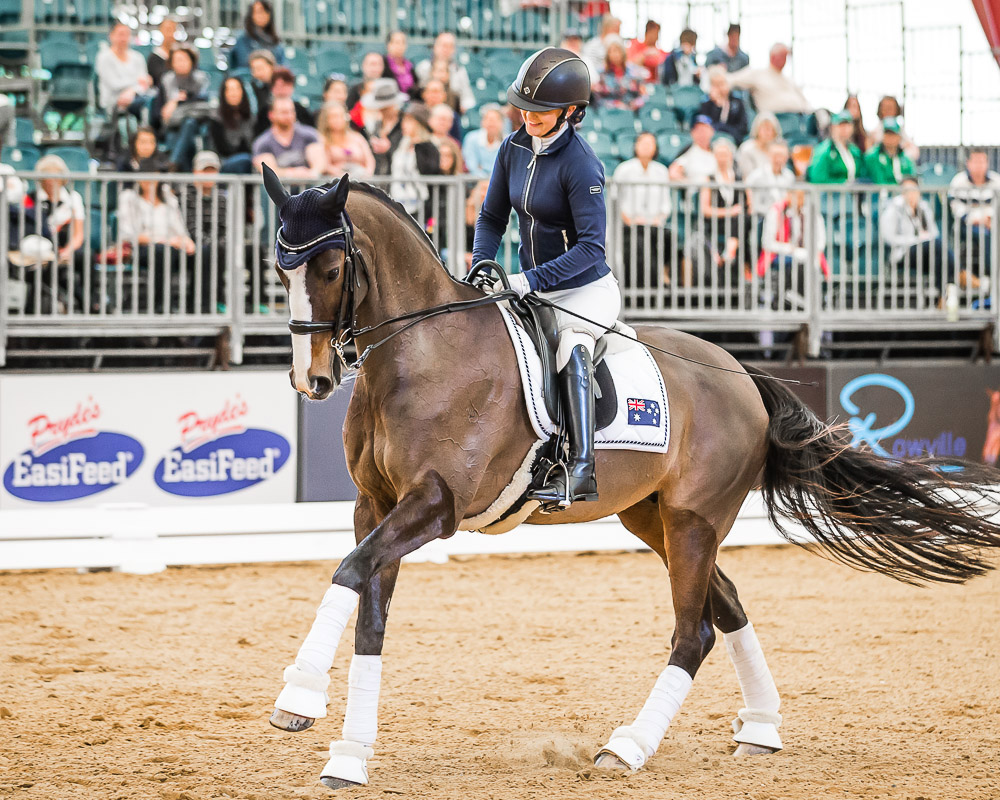
“A little more slow, a little more relaxed, move the hands a little and move the hands a little. Take the pressure from the reins, very relaxed in your hands, more relaxed, more slow, and when she goes slower, there is more swing.”
I had always assumed that Emma got behind the movement occasionally because of the difficulty she has in holding her position in the saddle, even with her upper legs strapped in, but we saw with Pedro’s gentle encouragement how she could hold her position and give the rein, and we saw the horse start to dance.
“See that gets her slower and lighter, more harmonic. When I tell Emma to smile, the horse she feels the vibrations, it is very important to have good vibrations.”
You don’t have to be into vibrations to appreciate sweet sympathetic instruction and a talented rider who is prepared to try…
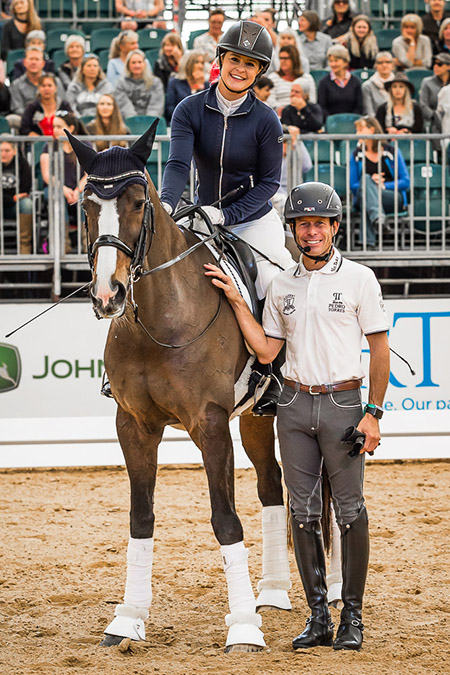
Like many of the riders in Portugal, riding for Pedro is family business: “It started with my father, then I had some Masters to really help me find this way. You start to pick a bit from this master, a bit from that one, and you find your goal. In a way it was how I was riding that pushed me a bit this way, for seven or eight years, I started to ride at seven o’clock in the morning and I never finished before ten, without breaks, without holidays, without Sundays, this was my life. Then I really started to get very tired and my body could not handle any more, then I started to think, how is it that the Old Masters ride when they don’t have as much strength in their body as me? Then I started to find another way to ride, because if Old Masters can ride and teach horses without being strong, then it is not strength.”
“Then I started to think in a different way. How can I get the feeling a little bit faster? Otherwise I have to wait until I am sixty years old! Then I started to learn techniques, like I would ride for many minutes with my eyes closed. Because when you close your eyes, the other senses wake up. It’s a bit like blind people, they can listen better, feel better. This is when I started to think, okay if I close my eyes, my body has to understand the movement, and if I understand the movement and the balance, then I don’t have to be so strong. I can help in the correct moment, because if you help in the correct moment, you don’t have to be so strong.”
“Then I started to develop these techniques, step-by-step and in the end I realised, okay the horse is a skeleton, and behind the skeleton is muscles and tendons and skin. And if you do not relax the muscles, the skeleton cannot move in the way you want. As a rider, you have to be a little bit like a physiotherapist, you’ve got to know a little bit bio- mechanic, what kind of touch influences what muscles in the different balances, and these things you have to mix all together before you will find the natural balance of the horse. If the horse is in natural balance, it is going to be easy to dance with him, because in the end, it is supposed to be a dance. I like to dance with my horse, I don’t want to force my horse to dance, this I want to show in the Masterclass – it is with the simple touch, with the simple movements, you really can dance with the horses.”
The next horse and rider combination was Jessica Greelish and Good Time:
“Again I want him to go really slow. He pulls, I hold, then I go light, but slow, when you are learning to dance, you go really slow. I want a Grand Prix horse, but when the horse goes very fast in trot and canter, it is very far from Grand Prix. If the horse has big movements, I work short movements, if the horse has short movements, I work big movements.”
This segment, Pedro gets a little beyond the very basic relax and let it happen message we’ve had so far. He wants the horse to use more shoulder in the canter so he bends it to the outside through the corner, then straightens and sure enough, the shoulder lengthens.
The attempts at higher level work are not so successful. The canter pirouettes are quite successful, say a 6, but the three times changes are not a success. The horse is croup high for say, a big 4 or a small 5, all it really proves is that the quality of the flying change depends on the quality of the canter, and in this instance the canter lacks quality – to fix the problem it would be wise to follow Pedro’s advice: “The best way is the easy way, if you don’t find an easy way, go back to the base.”
Next in Claire Arnold and Dolcima. The horse is apparently at Prix St Georges level but it is so tense that Pedro resorts to that universal remedy, a little turn around the forehand “to get the hind legs to cross and loosen the horse’s back.”
You can really see why relaxation features so prominently on the training scale. I am reminded of a Dressage with the Stars class back in 2000 when Bennett Conn presented Amoucheur, tight as a drum and hauled into a frame. “Make the horse long and loose,” Michael Klimke asked… over and over until he finally said that he was sorry he could not teach them anything if the horse could not relax.
It takes Pedro a good half hour before he has the horse sufficiently chilled to actually do a little work, finishing with some threes and twos, that sort of happen even if there is no expression, before to the delight of the exceptionally easily pleased audience, he finishes with a bit of auction trot up the centre line and I guess the horse ends up as tense as it was in the beginning.
The next horse, Heather Currie’s imported Andalusian stallion, Istan de Azuel gave Pedro the opportunity to let fly with the flair that comes so naturally to riders from his part of the world.
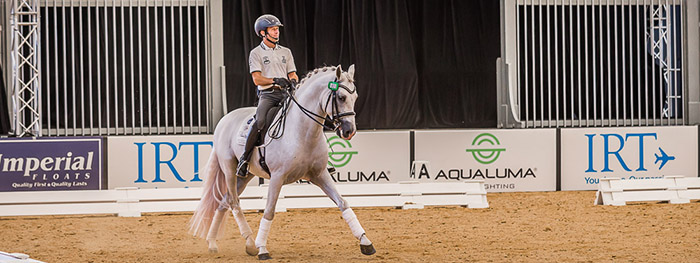
Pedro was quick to recognize that like many of his breed, Istan was one horse in front, and one quite different, much slower horse, behind.
“These horses has so much flexibility but with that flexibility comes a weak hind end.”
Pedro tried for a while to fix the problem, but every time he got the coordination right, it would fall apart again, so he wisely decided to give the audience a thrill – a freestyle.
“When the music is ready, let’s dance.”
Even without any piaffe or passage, it was an entertaining show, there were even triple pirouettes and a nice line of ones. Pedro finished the show riding one handed, the other waving to the crowd, many of whom were on their feet applauding.
Pedro Torres sees himself as an individual rather than the carrier of a Portuguese tradition:
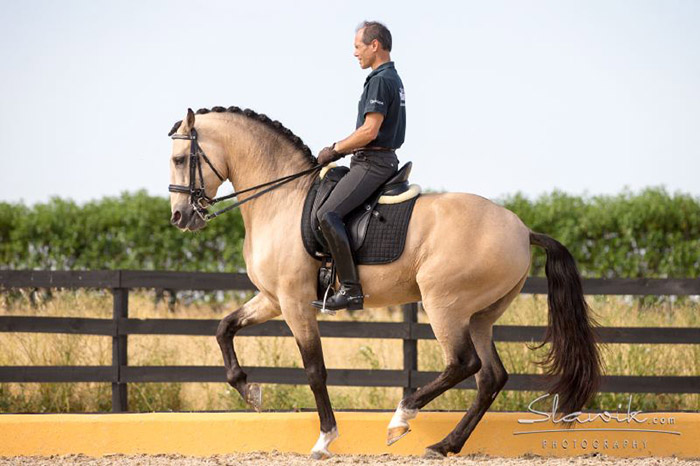
“I think this is my way of riding, but of course this comes also from the Portuguese way of riding. In Portugal you have Lusitanos, a horse that has been developed by centuries for bull-fighting. The horse for bull-fighting has to be very courageous, the balance has to be a lot on the hind legs because otherwise he doesn’t turn with one hand in front of the bull. With so much adrenalin, so much power, you really have to find a nice balance so the horse can turn very fast and not be caught by the bull. This is our tradition, to ride light with the little contact. The contact is the connection between you and the horse, I don’t like to ride with no contact, with the reins completely loose because then the connection doesn’t exist. It’s nice to have a little connection, but soft connection.”
“That connection will not change the balance of the horse, it is just supporting. Again, you come to the dance, if you dance with someone, you have your hand in their back and you help them to dance – you don’t grab because if you grab, you stop the movement of your partner. You can’t stop the movement, you have to go with the movement and see what that movement can create.”
At one stage you trained a little with the German dressage rider, Martina Hanover…
“It was when I started to do dressage and Martina was important to give me the guidelines for the competition. Of course, I adapted it a bit to my style. I don’t like to ride with so much pressure. It is not possible for me, to ride my way, more than five seconds in contact. I think that is a lot, five seconds in contact, so for me I had to adapt a little bit but it was important to have the guidelines, how to get more points in the competition.”
But now you have decided you really don’t want to be a competitive dressage rider?
“Actually I have one horse that I compete in the Grand Prix level but that is not my goal. If I start to think about competition as my goal, I start to go a little bit away from where I want to be, and I just want to be a better rider. I want to understand better the horses, I want to understand better the balance. If I start to use the horse to get test marks, then I am a bit limited. I am not so young, but I am also not old, and I want to spend the rest of my life discovering new things. I want to try to help people understand better their horses. Don’t push too much, be happy, and let the horses also be happy.”
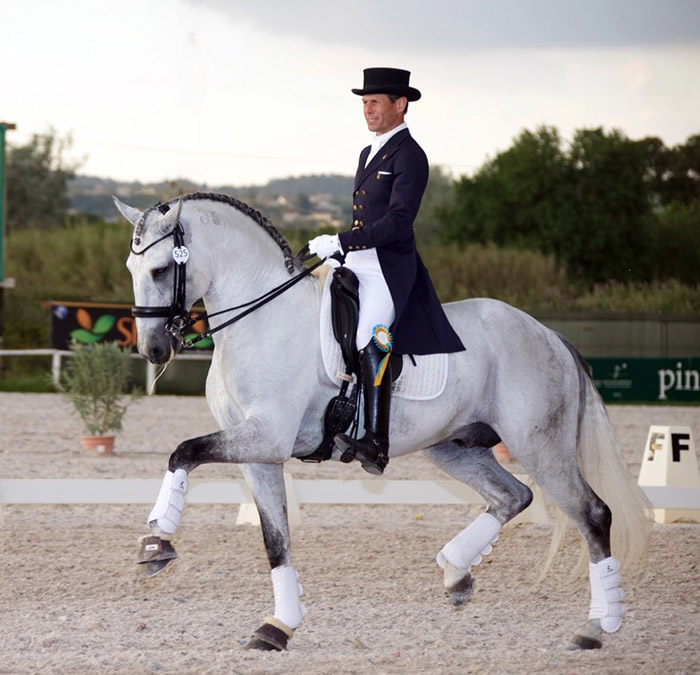
Where are you based now?
“I have an Academy in Portugal. I don’t have too many students, because the students are like the horses, they need time. Normally people stay at my place for three years. It is not just to learn the techniques but also to learn the philosophy. How to analyse? What you can change – when you have to adapt… and this needs time. It’s not just a technique, pull the rein, shoulders back, more legs, no, no, it is the philosophy: feel the balance, how much you interfere, how much you are stiff in your hands, in all these things it is really important to keep the balance and to keep the natural balance, free. At the moment, I have students from France, from Germany, and also two students from Portugal, five and it is full, for this year I don’t have any more spaces.”
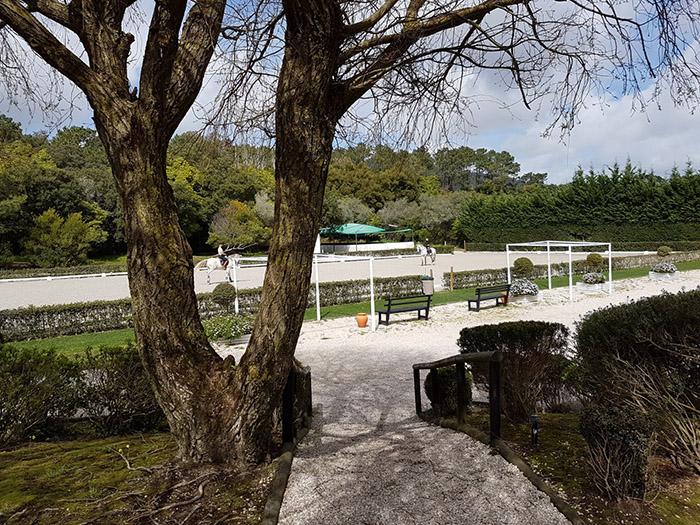
How many horses?
“In this moment, twenty four. Some horses are in training with me, some are from students, some from clients. For every horse I have a project to improve them, different horses, mainly they are Lusitanos but I have also Warmbloods, I have two Spanish horses.”
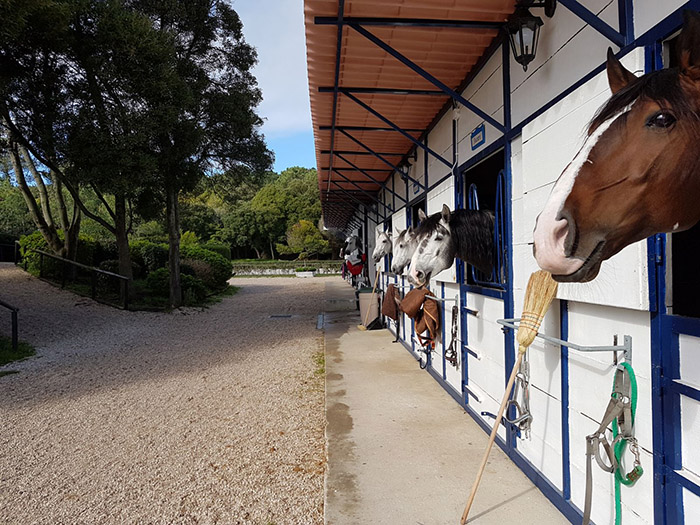
“This is what I want to do in the rest of my life. Actually what I really want to do is ride better, to understand horses better, I keep going forward and I teach my pupils everything I discover. I think I have a little bit, a gift and I have to transmit this gift to other riders. I think it is really important that people understand more about the horses.”
“I give you an example. Many times people say, use the outside rein, because all the books say use the outside rein, but try the inside rein! Maybe that horse goes better with inside rein, I want the riders to find the best way for their horse in that moment. They ask, do you ride with inside or outside rein? I ride with what the horse needs. I have some techniques, if they don’t work, I change. But normally it is supposed to be… – normally, but not all horses are equal. The balance of the horse is not equal, and I am very open to find the best way for this horse.”
“I am always learning. Every time I give a clinic, and almost every weekend I go somewhere in the world to give a clinic, and every time I give a clinic, I learn. Even from a very weak rider on a very green horse you can learn something. This is a gift to me, to travel so much and meet these riders and really absorb the difficulties and try to resolve the problems, for me this is the way to find the knowledge.”
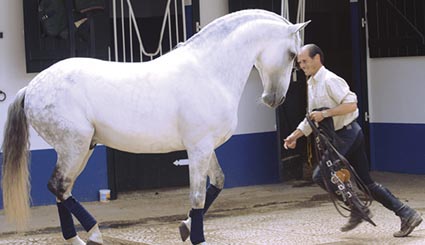



Great article
A very interesting article, we need more people like him in the world to make it a happier place for horses !
Great article, I just attended a Clinic with Pedro at SIEC,
He made a dramatic improvement in me and my horse,
I have come home and continued practicing, the changes are becoming more solid,
I found Pedros’ method very simple.
He really cares about the horses.
I have read this article about Pedro. And l found some of the comments about the audience at equitanna derogative !!!
So we, who enjoyed Pedros masterclass were an” exceptionally easily pleased audience” !!! Maybe we could see his skill in working with horses
and showing even if not AMAZING transformations at least improvements : within a short time frame ! Please come of your high horse sometimes !!